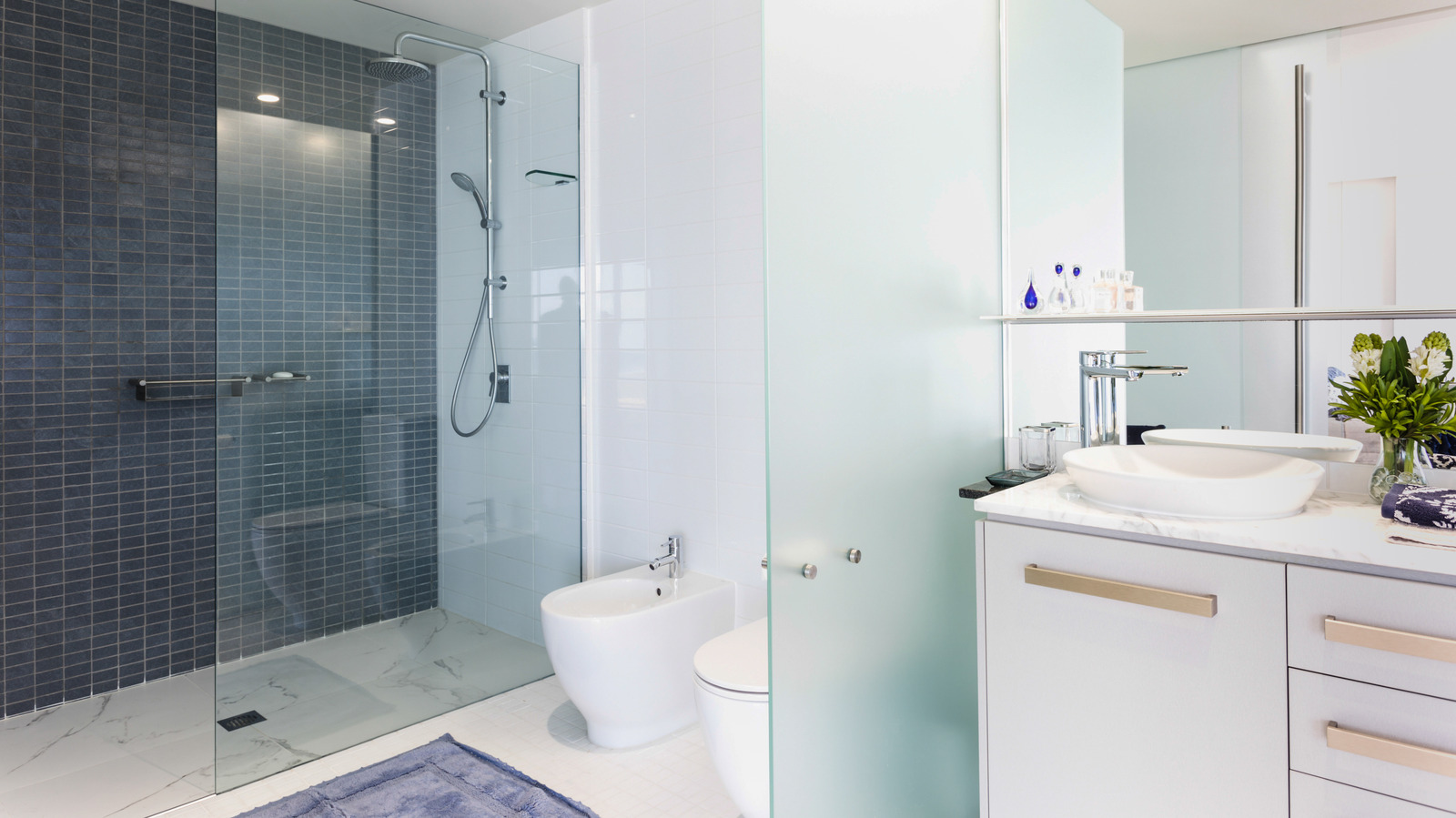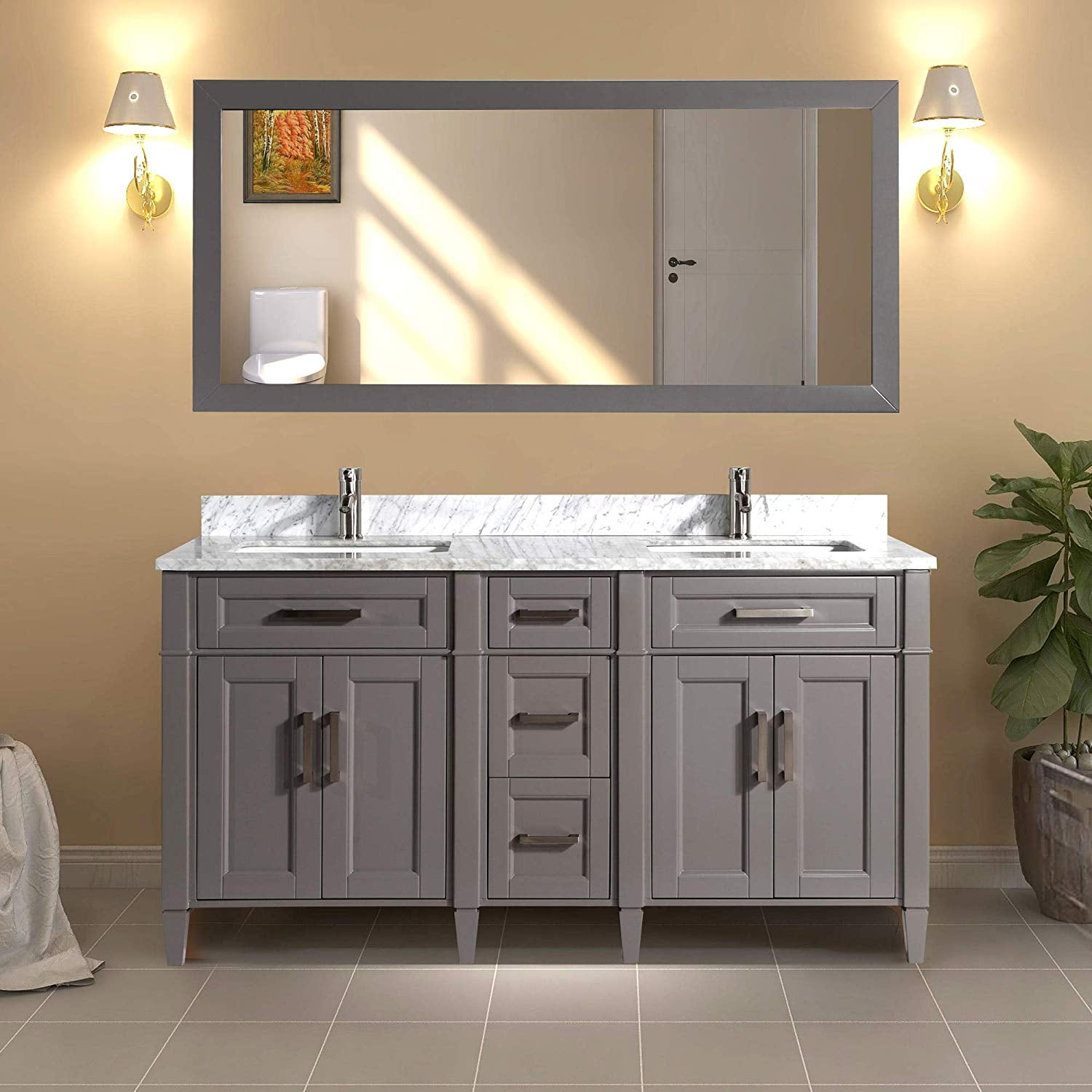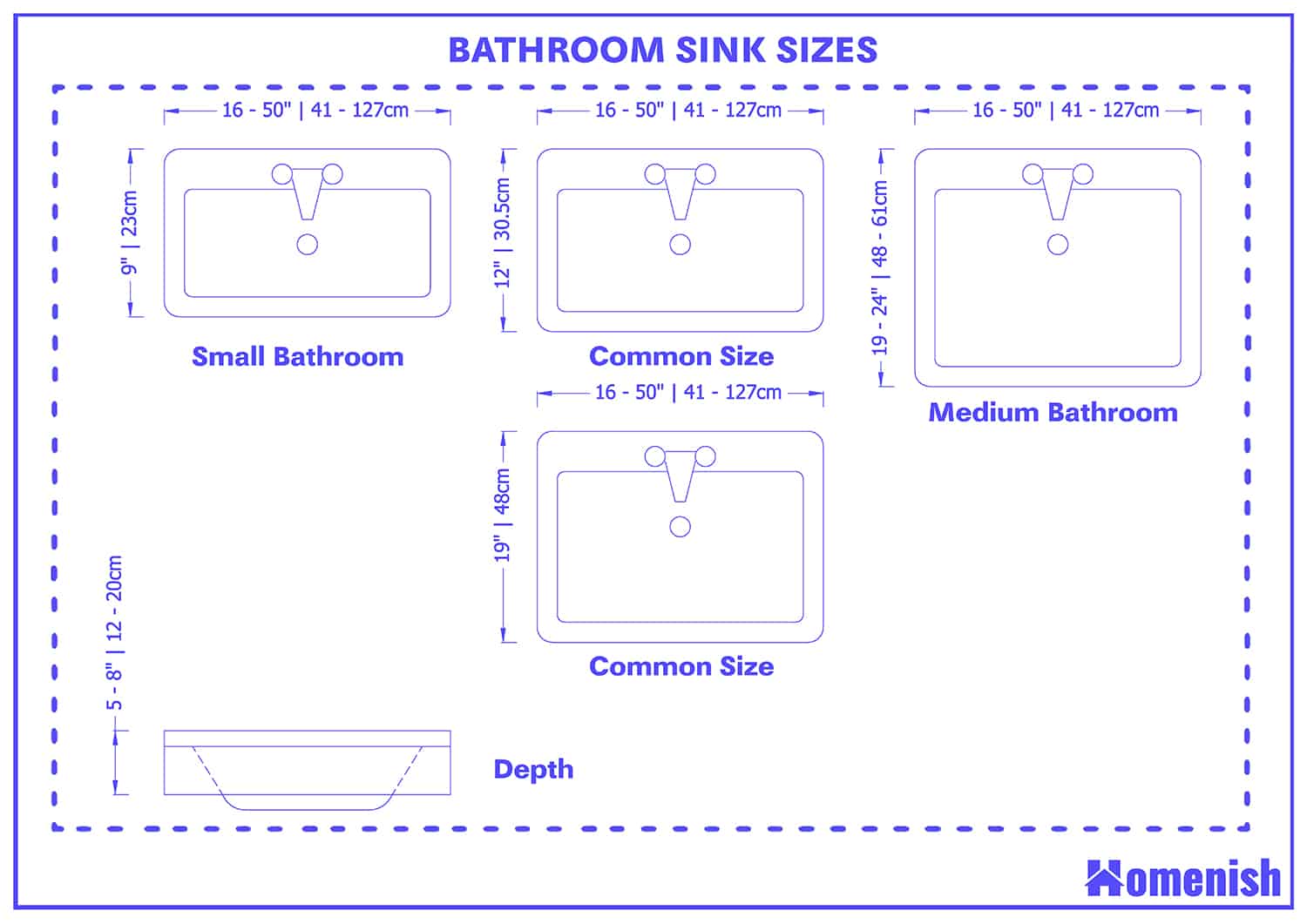Bathroom Vanity Size and Space Considerations: Bathroom Vanities Less Than 24 Inches

Choosing the right bathroom vanity size is crucial, especially when dealing with limited space. A well-selected vanity can transform a small bathroom from cramped to functional and stylish.
Choosing the Right Vanity Size
The ideal vanity size for a small bathroom depends on the available space and your specific needs. A 24-inch vanity offers a balance between functionality and space-saving. It provides enough counter space for basic toiletries and a sink, while minimizing footprint.
Maximizing Space with a 24-Inch Vanity
A 24-inch vanity can maximize space in a small bathroom in several ways:
- Minimal Footprint: A 24-inch vanity takes up less floor space compared to larger vanities, leaving more room for movement and other bathroom fixtures.
- Vertical Storage: Utilize the vertical space above the vanity by incorporating shelves, drawers, or a mirror cabinet. This allows you to store more items without sacrificing floor space.
- Open Shelving: Open shelves beneath the vanity can be used to display decorative items or store frequently used items.
Examples of Small Bathroom Layouts
Here are a few examples of small bathroom layouts where a 24-inch vanity would be ideal:
- Powder Room: A 24-inch vanity is perfect for a powder room, providing enough counter space and storage for basic needs.
- Small Guest Bathroom: In a small guest bathroom, a 24-inch vanity can maximize space while still offering a comfortable and functional experience.
- Limited Space Bathroom: If you have a bathroom with limited space, a 24-inch vanity can be a great way to make the most of your available area.
Maximizing Storage Within a Small Vanity
Here are some tips to maximize storage within a small vanity:
- Utilize Drawers: Choose a vanity with drawers that are deep enough to store larger items, such as towels or hair styling tools.
- Utilize Shelves: Utilize shelves within the vanity to separate items and maximize storage capacity.
- Use Storage Bins: Use storage bins or baskets to organize smaller items within drawers or shelves.
Vanity Size Comparison for Small Bathrooms
Here is a table comparing the pros and cons of different vanity sizes for small bathrooms:
| Vanity Size | Pros | Cons |
|---|---|---|
| 24 inches | Space-saving, functional, affordable | Limited counter space, may not be suitable for large families |
| 30 inches | More counter space, can accommodate a larger sink | May be too large for some small bathrooms |
| 36 inches | Plenty of counter space, suitable for larger families | May be too large for very small bathrooms |
Popular Styles and Materials for 24-Inch Vanities

In the bustling South Jakarta landscape, small bathrooms are common, and maximizing space is key. A 24-inch vanity offers a practical solution, but the style and material choices can make all the difference. Let’s explore the most popular vanity styles and materials to create a chic and functional bathroom sanctuary.
Vanity Styles for Small Spaces
When selecting a vanity for a compact bathroom, consider styles that optimize space and enhance the overall aesthetic. Here are some popular choices:
- Floating Vanities: These modern marvels give the illusion of more space, as they appear to float above the floor. They are perfect for smaller bathrooms as they don’t obstruct floor space.
- Pedestal Vanities: With a single pedestal base, these vanities offer a sleek and minimalist look, maximizing floor space. They are ideal for smaller bathrooms with limited square footage.
- Wall-Mounted Vanities: Similar to floating vanities, wall-mounted vanities provide a streamlined look and free up floor space. They are a great option for maximizing space in smaller bathrooms.
- Corner Vanities: Corner vanities make the most of awkward spaces, maximizing storage and creating a visually appealing focal point. They are perfect for small bathrooms with limited floor space.
Materials for 24-Inch Vanities
The material of your vanity plays a significant role in its durability, aesthetics, and price. Here’s a breakdown of popular materials and their advantages and disadvantages:
- Wood: Known for its natural beauty and durability, wood vanities offer a classic and elegant look. However, they can be more expensive than other materials and require regular maintenance.
- Laminate: Laminate is a budget-friendly option that mimics the look of wood or other materials. It’s durable and easy to clean, making it a practical choice for high-traffic areas. However, it may not be as stylish or as long-lasting as wood.
- Acrylic: Acrylic vanities are known for their sleek, modern look and resistance to moisture and scratches. They are easy to clean and maintain, making them a good choice for busy bathrooms. However, they can be more expensive than laminate.
Top-Rated 24-Inch Vanities
Here’s a list of top-rated 24-inch vanities, showcasing their unique features and price points:
| Vanity | Features | Price Point |
|---|---|---|
| [Vanity Name 1] | Floating vanity with sleek modern design, ample storage, and durable construction. | [Price Range] |
| [Vanity Name 2] | Pedestal vanity with elegant curves, spacious countertop, and a timeless design. | [Price Range] |
| [Vanity Name 3] | Wall-mounted vanity with a minimalist look, integrated storage, and easy installation. | [Price Range] |
| [Vanity Name 4] | Corner vanity with space-saving design, ample storage, and a stylish finish. | [Price Range] |
Tips for Choosing and Installing a 24-Inch Vanity

Choosing the right 24-inch vanity for your bathroom can be a fun experience, but it’s also important to consider some key factors to ensure you get the best fit for your space and needs.
Choosing a 24-Inch Vanity, Bathroom vanities less than 24 inches
When choosing a 24-inch vanity, it’s essential to consider factors like sink type, storage options, and countertop material. These aspects play a crucial role in functionality and aesthetics, so choose wisely.
Sink Type
The sink type is a major consideration when selecting a 24-inch vanity. Here are some popular options:
- Undermount Sink: This type of sink sits below the countertop, creating a sleek and seamless look. It’s easy to clean and provides ample counter space.
- Vessel Sink: This stylish sink sits above the countertop, offering a unique and decorative element. It can add a touch of elegance to your bathroom.
- Integrated Sink: This type of sink is built into the countertop, creating a unified and modern look. It’s easy to clean and provides a seamless transition between the countertop and the sink.
Storage Options
Storage is crucial in a small bathroom, and a 24-inch vanity can offer surprisingly ample storage. Consider the following options:
- Drawers: Drawers provide convenient and organized storage for toiletries, towels, and other bathroom essentials. They can be accessed easily and offer a variety of sizes to accommodate different items.
- Cabinets: Cabinets offer ample storage space for larger items, such as cleaning supplies or extra towels. They can be closed for a clean and organized look.
- Open Shelves: Open shelves provide easy access to frequently used items and can add a decorative element to your bathroom. They are also a great option for displaying decorative items.
Countertop Material
The countertop material is an important factor to consider as it impacts the durability, style, and overall look of your vanity. Here are some popular options:
- Granite: This natural stone is durable, scratch-resistant, and heat-resistant, making it a popular choice for countertops. It comes in a variety of colors and patterns to suit any style.
- Quartz: This engineered stone is non-porous and stain-resistant, making it easy to clean and maintain. It’s also available in a wide range of colors and patterns.
- Marble: This natural stone is known for its elegance and beauty. However, it’s more susceptible to scratches and stains than other materials, so it requires more maintenance.
- Laminate: This affordable and durable material is available in a variety of colors and patterns to mimic the look of natural stone. It’s easy to clean and maintain, making it a practical choice for bathrooms.
Installing a 24-Inch Vanity
Installing a 24-inch vanity can be a DIY project for those with basic carpentry skills. Here’s a step-by-step guide:
Measuring and Preparing the Space
- Measure the Space: Before purchasing a vanity, carefully measure the available space in your bathroom, including the width, depth, and height. Leave some extra space for plumbing and electrical connections.
- Check the Floor: Ensure the floor is level and even. If not, you’ll need to level it before installing the vanity.
- Locate Plumbing and Electrical: Identify the location of water supply lines, drain pipes, and electrical outlets. You’ll need to make sure the vanity is positioned correctly for easy access to these connections.
Tools and Materials
You’ll need the following tools and materials for installing a 24-inch vanity:
- Level: To ensure the vanity is installed level.
- Tape Measure: To measure the space and cut materials.
- Pencil: To mark the installation location and cut lines.
- Screwdriver: To assemble the vanity and attach it to the wall.
- Drill: To drill pilot holes for screws.
- Caulk Gun: To seal gaps between the vanity and the wall.
- Caulk: To seal gaps and prevent water damage.
- Plumber’s Tape: To seal pipe threads.
- Adjustable Wrench: To tighten and loosen pipe fittings.
- Safety Glasses: To protect your eyes from debris.
- Gloves: To protect your hands.
Installing the Vanity
- Assemble the Vanity: Follow the manufacturer’s instructions to assemble the vanity.
- Position the Vanity: Place the vanity in its desired location, ensuring it’s level and centered.
- Attach the Vanity to the Wall: Use screws to attach the vanity to the wall studs. Make sure the screws are long enough to secure the vanity properly.
- Connect the Plumbing: Connect the water supply lines and drain pipe to the vanity. Use plumber’s tape to seal the pipe threads.
- Connect the Electrical: If your vanity has electrical outlets, connect them to the electrical wiring.
- Seal Gaps: Use caulk to seal any gaps between the vanity and the wall.
- Install the Countertop: Install the countertop according to the manufacturer’s instructions.
- Install the Sink: Install the sink according to the manufacturer’s instructions.
- Uneven Floor: If the floor is uneven, you’ll need to level it before installing the vanity. You can use shims or leveling blocks to adjust the height of the vanity.
- Incorrect Plumbing Connections: Ensure that the water supply lines and drain pipe are connected correctly. If you’re not sure, consult a plumber.
- Loose Screws: Make sure the screws that attach the vanity to the wall are tight. If they’re loose, the vanity may become unstable.
- Leaking Faucet: If your faucet leaks, you’ll need to tighten the faucet connections or replace the faucet.
